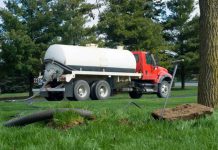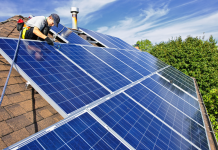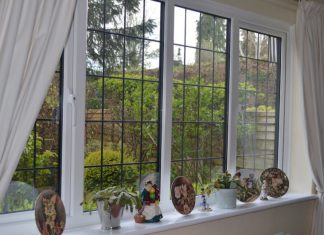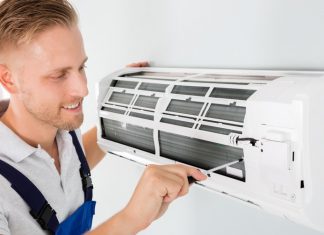In the realm of industrial and commercial spaces, where air circulation is crucial for comfort, productivity, and energy efficiency, a silent giant has been steadily making its presence known—the High Volume Low Speed (HVLS) fan. These mammoth fans, with their impressive diameters ranging from 7 to 24 feet, are revolutionizing the way large spaces manage their airflows. In this article, we delve into the world of HVLS fans, exploring their mechanics, benefits, applications, and the future they hold.
Understanding HVLS Fans
HVLS fans are engineered to move large volumes of air at low rotational speeds. Unlike traditional fans, which operate at higher speeds and produce more noise, HVLS fans deliver gentle, consistent airflow throughout a space without creating disruptive drafts. This unique design makes them ideal for facilities with high ceilings and expansive floor areas, such as warehouses, distribution centers, gymnasiums, and manufacturing plants.
The hallmark of HVLS fans is their size. These colossal machines can span diameters of up to 24 feet, allowing them to cover vast areas with ease. Large HVLS fans are specifically designed to move massive volumes of air in expansive spaces efficiently, making them ideal for facilities that require uniform airflow across significant distances. Despite their imposing dimensions, HVLS fans operate quietly and efficiently, thanks to their low-speed, high-volume airflow.
The Mechanics Behind HVLS Fans
At the heart of every HVLS fan lies a sophisticated combination of aerodynamics and engineering. These fans typically feature large, aerodynamically designed blades that are specifically engineered to move air efficiently at low speeds. The slow rotation of the fan blades ensures that air is gently circulated throughout the space, creating a uniform environment without causing discomfort to occupants.
To achieve optimal performance, HVLS fans are powered by robust electric motors that drive the rotation of the fan blades. These motors are designed to deliver the necessary torque to rotate the massive blades while consuming minimal energy. As a result, HVLS fans are not only highly effective at circulating air but also exceptionally energy-efficient, making them a sustainable choice for large-scale ventilation solutions.
Benefits of HVLS Fans
The adoption of HVLS fans offers a myriad of benefits for businesses and organizations across various industries:
Improved Air Circulation
One of the primary benefits of HVLS fans is their ability to improve air circulation in large spaces. By gently moving air throughout the area, these fans help maintain consistent temperatures and reduce the stratification of air, creating a more comfortable environment for occupants.
Enhanced Thermal Comfort
HVLS fans can help alleviate the discomfort associated with temperature differentials in large spaces. By circulating air effectively, these fans distribute heat evenly during the winter months and promote cooling airflow during the summer, thereby enhancing thermal comfort for building occupants.
Energy Efficiency
Despite their size, HVLS fans are remarkably energy-efficient. Compared to traditional HVAC systems or multiple smaller fans, HVLS fans consume significantly less energy while delivering superior airflow and ventilation. This translates to lower energy costs and reduced environmental impact, making HVLS fans a sustainable choice for building ventilation.
Noise Reduction
Unlike traditional fans, which can produce considerable noise at higher speeds, HVLS fans operate quietly due to their low rotational speeds. This makes them ideal for noise-sensitive environments such as offices, classrooms, and recreational facilities, where maintaining a peaceful atmosphere is essential.
Improved Indoor Air Quality
Proper air circulation facilitated by HVLS fans helps improve indoor air quality by reducing the buildup of pollutants, allergens, and odors. By continuously circulating fresh air throughout the space, these fans promote a healthier and more pleasant indoor environment for occupants.
Enhanced Productivity
Studies have shown that improved thermal comfort and indoor air quality can have a positive impact on productivity in commercial and industrial settings. By creating a more comfortable and conducive work environment, HVLS fans can help boost employee morale and productivity, ultimately leading to better business outcomes.
Applications of HVLS Fans
The versatility of HVLS fans makes them suitable for a wide range of applications across various industries:
Warehouses and Distribution Centers
HVLS fans are commonly used in warehouses and distribution centers to improve airflow, regulate temperatures, and maintain optimal conditions for storage and logistics operations. By reducing heat stratification and humidity levels, these fans help preserve the quality of goods while creating a more comfortable working environment for employees.
Manufacturing Facilities
In manufacturing facilities where heat-generating equipment and machinery are prevalent, HVLS fans play a crucial role in dissipating heat and improving ventilation. By circulating air effectively, these fans help regulate temperatures, prevent equipment overheating, and create safer working conditions for personnel.
Retail Spaces
Retailers utilize HVLS fans to enhance the shopping experience for customers by maintaining comfortable temperatures and improving air quality. In addition to improving thermal comfort, these fans can also help circulate air to prevent the buildup of stale air and odors, creating a more inviting atmosphere for shoppers.
Sports and Recreation Facilities
In gymnasiums, sports arenas, and recreational facilities, HVLS fans are employed to regulate temperatures, reduce humidity levels, and provide cooling airflow during physical activities. By creating a comfortable environment for athletes and spectators alike, these fans contribute to the overall enjoyment and safety of sporting events and recreational activities.
Agricultural Buildings
In agricultural settings such as barns, stables, and greenhouses, HVLS fans are used to improve ventilation and create a more comfortable environment for livestock, crops, and workers. By circulating air effectively, these fans help regulate temperatures, reduce moisture levels, and mitigate the risk of heat stress in animals and plants.
The Future of HVLS Fans
As technology continues to advance, the future of HVLS fans looks promising. Innovations in motor efficiency, blade design, and control systems are making these fans even more energy-efficient, quiet, and effective at circulating air. Additionally, the integration of smart technologies such as sensors and automation systems enables HVLS fans to adapt to changing environmental conditions and optimize performance in real-time.
Furthermore, the growing emphasis on sustainability and energy conservation is driving increased adoption of HVLS fans as a green alternative to traditional HVAC systems. With their ability to reduce energy consumption, improve indoor air quality, and enhance thermal comfort, HVLS fans are poised to play a significant role in the transition towards more sustainable building practices.
In conclusion, HVLS fans represent a powerful solution for effectively managing airflows in large industrial, commercial, and recreational spaces. With their impressive size, energy efficiency, and ability to improve thermal comfort and indoor air quality, these silent giants are reshaping the way we think about ventilation and climate control. As businesses and organizations seek sustainable and cost-effective solutions for their air circulation needs, HVLS fans stand out as a compelling choice for achieving optimal comfort, productivity, and environmental responsibility.














